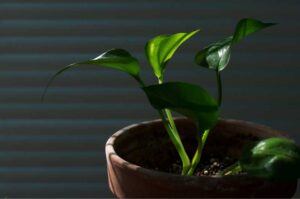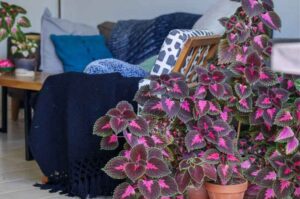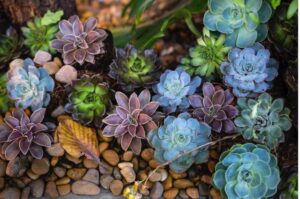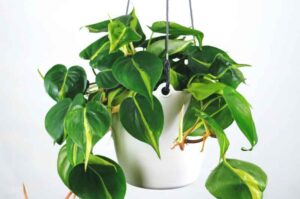Why Is My Calathea Not Growing New Leaves?
Calatheas are beautiful but fussy plants that demand extreme care. If you don’t take care of them right they will start showing signs of distress. They can express their despair by curling their leaves, changing the leaf color to yellow and brown, or even stunted growth. Not growing new leaves is one of these signs of distress. So, if that’s the problem with your plant, this article will help you to understand why your Calathea is not growing new leaves.
Improper watering habit is one of the most common causes for your Calathea plant not growing new leaves. Both overwatering and underwatering can make this plant upset, preventing its foliage growth. Other major issues that cause this problem includes direct exposure to sunlight, cold temperature, low humidity, and transplant shock.
If you can address these problems effectively your plant will start growing new leaves in no time.
That being said, one needs to know precisely how to care for these lovely living beings so that they can keep growing healthy leaves and enhance their beauty.

Reasons for a Calathea Not Growing New Leaves
Here are a few major reasons for which a Calathea is not growing new leaves.
Improper Watering
One of the reasons your plant is not growing new leaves can be due to improper watering. These plants don’t do well when they are watered like other houseplants.
Calatheas need a perfect balance of water in the soil they are growing. This means they require moist soil for proper growth and consequently the growth of new leaves, but the soil should not be waterlogged.
Creating the perfect balance of water in the soil is immensely important because both overwatering and underwatering have their adverse effect on the plant.
Over Watering
Overwatering clogs the air spaces in the soil. By doing so the roots are deprived of air which is an important factor for the growth of a plant. Yes, roots need air too.
What this does is cause root rot, something you never want your Calatheas to be affected with. You can easily spot if your plant has root rot because once that happens the leaves start changing their color to yellow and also start having brown tips.
Some of the causes of overwatering can include.
- Less number of drainage holes in the pot.
- The plant is kept in very low light.
- The pot your Calathea is growing in is large. The soil takes longer to dry out and causes sogging.
- Poorly drained soil.
How do you revive Overwatered Calathea?
- Choose a well-draining potting soil. It will allow the excess moisture to escape out quickly, preventing a waterlogging situation.
- Apply water only when the top two-inch layer of soil is dry.
- Choose a pot with proper drainage holes. It will help to remove the extra water out of the root zone, preventing a waterlogging condition.
- Keep your plant in a place that is getting a good amount of medium to bright indirect light.
Under Watering
While overwatering clogs pores and air spaces in the soil, underwatering makes the plant dehydrated. And a Calathea suffering from dehydration will show the following symptoms
- Curl its leaves to stop water loss through transpiration.
- Drooping of leaves.
- The appearance of brown patches on the edges of the leaves.
- Yellowing of the foliage.
Solutions
Finding the perfect balance is not at all difficult even if you are doing this for the first time. You can follow these simple methods to get going.
- Check if the upper layer of the soil has turned dry. Push your finger down around 1-2 inches and see if the soil is moist or not.
- If the soil is moist you don’t have to water it for the time being.
- If you feel the soil is dry, water it thoroughly and let the excess water pass through the drainage holes. Thus, you should make sure that the pot you’re using has enough drainage holes in it.
Just repeat this process every time before watering and watch your plant grow healthy new leaves in front of your eyes.
You may also like- How do self watering pots work? Complete working principle.
Lower Humidity Levels
Being tropical plants Calatheas prefer higher humidity levels and a constant environment all throughout the year.
When subjected to less humidity these plants not only show less growth of their leaves but end up having stunted growth on a whole.
The first thought that might come to your mind after reading this is Misting. But remember, spraying mist and fixing the humidity of the surrounding area are completely different scenarios.
Misting only provides temporary moisture by making the leaves wet for a short while. On the other hand, fixing the humidity means raising the moisture content of the surrounding air.
How you can fix the Humidity
Start by measuring the humidity of the air surrounding the plant. You can easily do this with a hygrometer.
Next, you’ll need to increase the humidity and maintain it at a steady level. Here’s how you can do it.
- An easy way to increase the humidity of the surrounding air where the plant is kept is by using a humidifier. You can find one online or even at a local store.
- Another method used by many is keeping their Calathea on top of pebbles or peat moss which is submerged in water. This is called a humidity tray or pebble tray. The water evaporates throughout the day and keeps the humidity levels up around the plant. If you’re going to use this method make sure to change the water from time to time to prevent bacterial growth. Also, make sure that the roots of the plant itself don’t touch the water as this will cause root rot which is harmful to the plant.
- The third method is to group your plants. Plants release water by a process called transpiration. This adds moisture to the surrounding air and maintains a steady humidity level, which is beneficial for the plants.
The takeaway from this section is that you have to make sure the humidity stays up for your plants so they can remain healthy and consequently grow new leaves. And you can do this by any of the methods mentioned above.
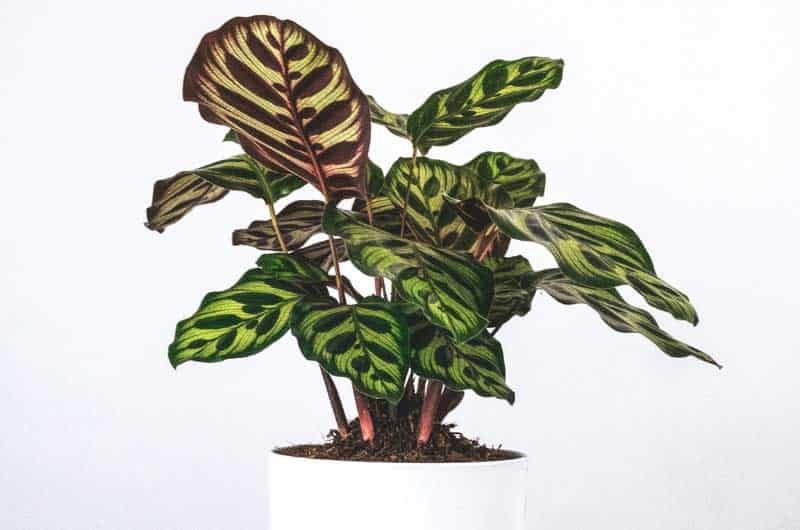
Water Quality
Having the proper water quality is a must for making your plants grow new foliage. This is because Calathea plants are very sensitive to an overabundance of minerals in the water. Thus, you should not use hard water.
You can identify if the water you are using is hard or not by observing the plant itself. The leaves curl up, brown edges appear and no new leaves come out when there is an overabundance of minerals in the water.
Also, you’ll notice white salts on the surface of the soil after a while if you are using hard water.
Preventive Measures
Tap water can be used if you can make sure that it doesn’t have a high concentration of salt. But my advice would be to use distilled water. This I say because many people have succeeded in growing their Calathea plants using distilled water.
One point that I’d like to mention here is the use of fertilizers.
Though Calathea plants generally do not require fertilizers, if your plants aren’t growing new leaves you should consider using some.
Choose an all-purpose balanced fertilizer, you can get it either from your nearest garden store or you can order online. Just make sure you are not overusing them.
Mixing 1/4 or 1/2 teaspoons in a gallon of water and using that might just solve your problem.
Too much exposure to direct sunlight
You might be surprised to know that Calatheas don’t really like exposure to direct sunlight. And this can be another major issue for your plants not being able to grow new leaves.
Calathea loses its leaf color when exposed to direct sunlight. The strong rays even in a short interval of time can burn their leaves. Also, they require damp soil for perfect growth and direct exposure to sunlight will cause the soil to dry up. Naturally, this will dehydrate your plants and prevent them from growing new foliage.
But that doesn’t mean Calatheas should be kept in the dark.
The Right Amount of light
What these plants actually require is medium to bright indirect sunlight. And you can achieve this by keeping your plants a bit further from your windows as the intensity of sunlight falls drastically with increasing distance from the window.
Another method you can apply is to put a sheet or a sheer curtain between your plants and the sunlight so that they don’t get the sun directly on their leaves.
Placing the Calatheas on your northern windows will also do the trick.
You may also like- Is my plant getting too much light? Can too much light kill a plant?
Temperature stress
Along with sunlight temperature also plays an important role. Calathea plants don’t have any tolerance to cold temperatures. The common distress signals being.
- Curling of leaves.
- Drooping of the plant.
- They will no longer move their leaves upward during the night and lower them during the day. Your Calatheas will stop ‘praying’.
The perfect temperature for these plants is around 60 degrees Fahrenheit to 80 degrees Fahrenheit.
Transplant Shock
These plants sometimes experience ‘transplant shock’ during repotting. What this means is suddenly the connection between the roots and the soil is disrupted which causes the roots to stop working. You will know this has happened if the leaves start wilting after a few days of repotting. This means the roots have stopped working and your plant is suffering from dehydration.
As such they will stop growing new leaves, making this another potential reason, especially after repotting.
Preventing Transplant Shock
As a rule of thumb, Calatheas should not be transplanted unless there is a chance of the plant becoming rootbound. But if it is necessary following the steps below will prevent you from hurting the plants.
- Simply use a knife or a similar object and detach the soil from the pot by running it around the circumference.
- Remove the pot gently so that no physical harm comes to the plant.
- Avoid meddling with the rootball unless it is necessary.
- Choose a new pot that is 1-2 inches bigger than the last one. And place the plant in it.
- Pour new soil around the old one and water the plant.
But if your Calathea is already suffering from transplant shock you can still help them recover.
Recovering from a transplant shock
It is genuinely hard for Calatheas to recover from a transplant shock but some immediate action might increase the chances of their survival. These steps are.
- Try reducing the loss of water while the roots recover.
- Increase the humidity around them as much as possible but avoid excess light or heat.
- Change the temperature around them to the lower end of their normal range (around 60F)
In Conclusion
Calatheas even though, being lovely can be quite intimidating to maintain. But you really shouldn’t be worried. All you need to do is be a bit more careful, cautious, and loving towards these beauties of nature. And you will see nature’s charm unfold before your eyes.

